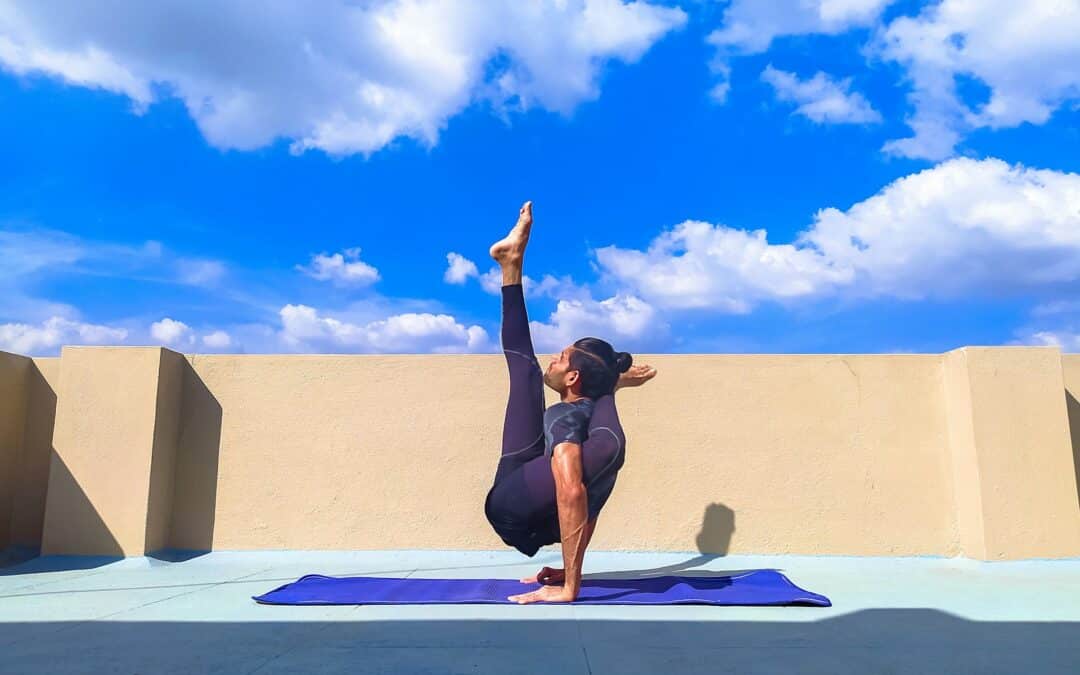Post-Traumatic Stress Disorder (PTSD) can deeply impact individuals, especially those in the gay community. This condition often stems from past experiences that leave emotional scars, affecting day-to-day life. In San Francisco, where the LGBTQ+ community thrives, it’s essential to highlight the importance of addressing trauma and its unique challenges. One effective way to foster healing and well-being is through yoga, a practice that provides both physical and emotional relief.
Yoga isn’t just about stretching; it’s a holistic approach that combines movement, breath, and mindfulness. For gay men dealing with PTSD, yoga offers a supportive space for healing. By focusing on yoga’s calming and grounding properties, individuals can experience reduced stress and increased emotional balance, which are vital components in overcoming trauma. In San Francisco’s inclusive environment, exploring these yoga routines can be an empowering journey toward recovery.
Understanding PTSD in Gay Men
PTSD is a mental health condition that occurs after witnessing or experiencing trauma. For gay men, PTSD can be triggered by various factors, including discrimination, rejection, or past traumatic events. These experiences can create deep-rooted fears and anxieties, making it difficult to navigate daily life without distress.
The challenges faced by gay men with PTSD are often compounded by societal pressures and stigmas. Rejection based on sexuality can leave lasting effects that are hard to shake off. Emotional support and understanding are crucial for healing, which is why tailored approaches, like yoga, are beneficial. Yoga allows individuals to reconnect with their bodies and emotions in a non-judgmental space.
In dealing with trauma, it’s important to have techniques that address both mind and body. Recognizing the signs and triggers of PTSD is the first step. By integrating therapies that cater specifically to gay men’s experiences, healing becomes more accessible and effective. Yoga’s focus on body awareness and breath control provides tools to manage stress and anxiety, paving the way for a steadier path to recovery.
Benefits of Yoga for Trauma Recovery
Yoga brings many benefits for those on a healing journey from trauma. It goes beyond just physical exercise and serves as a nurturing practice for the mind and soul. Through yoga, individuals can find a sense of peace and a stronger connection between the body and mind. This connection plays a crucial role in letting go of past traumas while fostering emotional well-being.
Physical health benefits are abundant with yoga. Regular practice helps improve flexibility, strength, and balance, which are essential for relieving tension stored in the body. Yoga’s emphasis on mindfulness is another significant advantage. Mindful breathing and movement help reduce stress by calming an overactive nervous system, contributing to a sense of calm and presence.
When it comes to recovery, yoga supports emotional balance and relaxation. Various practices in yoga teach the importance of self-compassion and acceptance. Incorporating these elements enables individuals to replace negative thoughts and feelings with positive ones, creating a pathway to emotional healing. It’s this gentle blend of physical and emotional care that makes yoga a reliable ally in trauma recovery.
Effective Yoga Routines for Gay Men with PTSD
For those embarking on a healing journey through yoga, selecting the right poses and routines is essential. Some specific yoga poses offer tremendous benefits for managing PTSD symptoms:
– Child’s Pose: Offers a comforting way to rest and ease tension in the back and shoulders.
– Warrior Pose: Builds strength and concentration, promoting confidence and resilience.
– Cat-Cow Pose: Encourages spinal flexibility and relaxation, alleviating stress and anxiety.
Breathing techniques are equally important. Learning to breathe deeply and slowly can help manage episodes of stress and panic:
1. Start seated, with a straight back, ensuring shoulders are relaxed.
2. Breathe deeply through the nose, filling the lungs completely.
3. Hold the breath for a few moments, then exhale slowly, releasing tension.
Consistency in practice is key. Building a routine that includes these poses and breathing exercises allows individuals to tap into yoga’s healing power. Even just a few minutes daily can make a substantial difference in managing PTSD symptoms and enhancing overall well-being.
Building a Supportive Yoga Community in San Francisco
Community plays a powerful role in recovery, especially in San Francisco, a city known for its diversity and inclusivity. Connecting with others who share similar experiences can provide camaraderie and encouragement. Several yoga studios and support groups welcome gay men seeking a nurturing environment.
By joining local classes, individuals benefit not just from the practice itself but also from the collective energy and support of like-minded people. It’s more than just exercise; it’s a shared journey that offers understanding and acceptance. Finding the right community can enhance the healing process, providing invaluable support along the way.
Taking the First Step Towards Healing
Yoga offers a transformative path for gay men dealing with PTSD, blending physical and emotional healing in a supportive practice. It encourages individuals to journey toward better mental health through mindful movements and focused breathing. This approach helps manage stress and rejuvenates the spirit.
Embarking on this journey can be both a challenge and a triumph. As individuals begin their yoga practice, they find strength in recognizing their own resilience and capability for growth. The supportive yoga community in San Francisco is there to walk alongside them, providing encouragement and a place to belong. With each pose and breath, healing becomes not just a goal but a beautifully evolving experience.
If you’re ready to embrace the healing power of yoga and connect with a supportive community, explore yoga for gay men’s trauma recovery. Danni Pomplun invites you to join our welcoming classes designed to support your journey towards healing and resilience. Discover how integrating mindfulness, breath, and movement can make a lasting impact on your well-being in the vibrant city of San Francisco.

